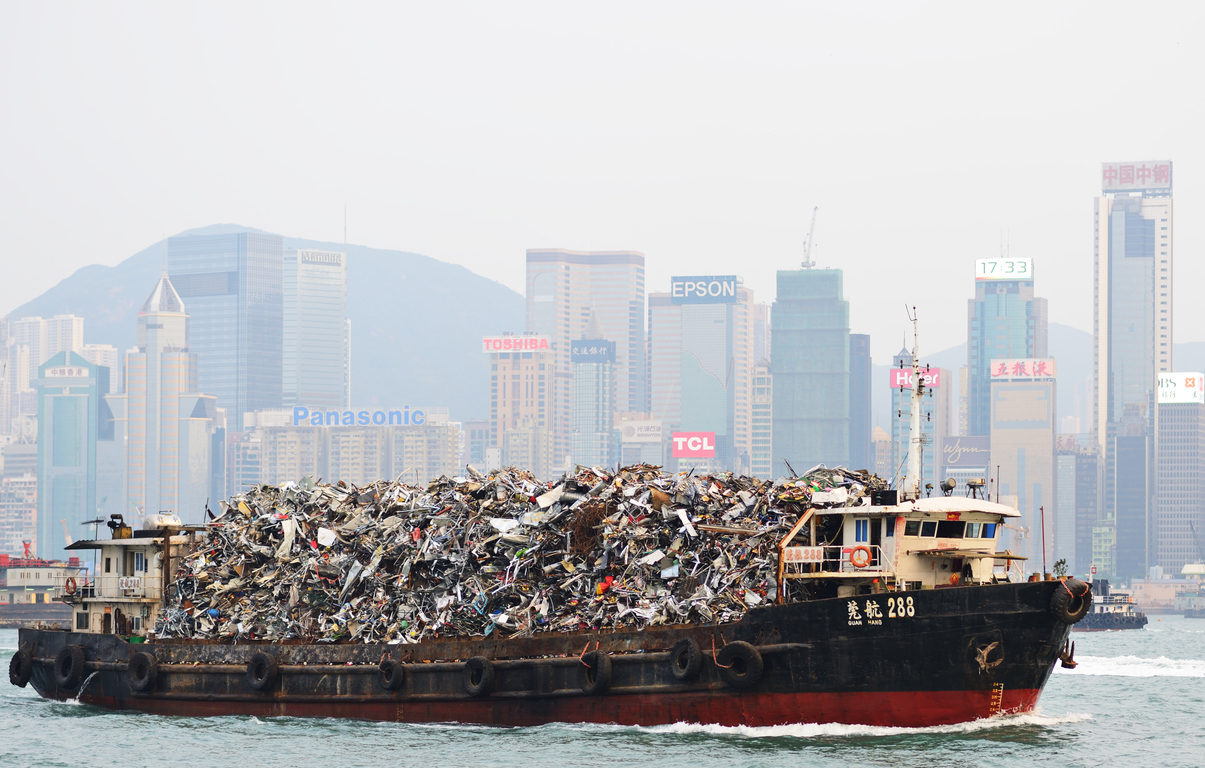Protectionism
Skirts on Lawnmowers and Other “Non-Tariff” Barriers to Trade
Published 10 November 2016
Countries often use a variety of tactics to give their home-grown companies a leg up over foreign competitors, like requiring "skirts" on lawnmowers of competitors. Countries resort to this less obvious or direct strategies – called “non-tariff barriers” or NTBs – in order to create advantages for domestic goods and services.
Getting a Leg Up
Countries often use a variety of tactics to give their home-grown companies a leg up over foreign competitors.
One obvious way to do this is to impose a tariff – or a tax – on foreign imports so that domestic products are cheaper than foreign goods. Vietnam, for example, imposes a 70 percent tariff on U.S.-made autos entering the country. That means a 2017 Ford Escape SUV, which starts at $23,600 in the United States, would cost Vietnamese consumers $40,120 to buy. Another example is the 38.5 percent tariff Japan currently imposes on U.S. beef (a tax that would largely be eliminated if the Trans-Pacific Partnership were to pass). This means that a top sirloin steak that retails for $16.99 a pound at a U.S. grocery store would cost Tokyo shoppers at least $23.53.
But countries also resort to less obvious or direct strategies – called “non-tariff barriers” or NTBs– in order to create advantages for domestic goods and services. Often, these barriers take the form of bureaucratic or legal barriers that have the effect of adding more hassle and costs for foreign companies seeking to import their goods.
Where Some Discipline Comes In
Countries can legitimately control what products and services cross their borders, and countries have a valid interest in protecting the health and safety of consumers. Public health, for example, is why the U.S. Food and Drug Administration has banned the import of unpasteurized, raw milk cheese. Countries can also ask that importers are licensed and meet appropriate requirements to bring foreign products and services into a country.
The problem is when legitimate bureaucratic and other requirements cross the line into unfairness and serve to discriminate against foreign imports for the benefit of domestic producers.
The World Trade Organization (WTO) enforces several agreements entered into by WTO members that include disciplines around a variety of non-tariff barriers. For example, the Agreement on Import Licensing Procedures provides that import licensing requirements should be “simple, transparent and predictable” and should not have the effect of “restricting” or “distorting” imports. Agencies that issue import licenses, for instance, generally can’t sit on an importer’s application for more than 30 days or impose mountains of unnecessary paperwork.
Rules requiring companies to label products by the countries of their origin are also disciplined by the WTO. Under the “Rules of Origin Agreement,” labeling requirements have to be “consistent, uniform, impartial and reasonable.” This means that countries party to this agreement can’t impose labeling requirements on only U.S.-made products, for example, or make labeling requirements too complex.
Outside of these agreements, however, there are plenty of subtle, not-so-subtle – and often highly creative – ways that countries have used non-tariff barriers to insulate domestic companies from foreign competition. Some infamous examples include:
- An attempt by French regulators in 2009 to require that U.S.-made (and only U.S.-made) riding lawnmowers manufactured by John Deere and other American companies have “skirts” installed over their transmissions, ostensibly for public safety. This is an example of a “technical barrier to trade.”
- Tax audits of Korean consumers who purchased American cars. Until about a decade ago, according to the L.A. Times, the Korean government used audits or the threat of an audit to discourage the purchase of imported cars. (The justification was that Korean taxpayers could afford to buy an expensive foreign car must have extra sources of income worth investigating.)
- The imposition of mandatory “standard” package sizes by the government of India on food and beverage products. Because these requirements would require special (and expensive) production lines for products going only to India, “numerous U.S. brands [are] effectively excluded from the Indian market,” according to the Office of the U.S. Trade Representative.
- Quotas on Canadian softwood lumber imports by the United States. In one of the longest-running trade disputes between the United States and its trading partners, the two countries agreed to limit the amount of Canadian timber entering the country to settle a controversy over alleged Canadian subsidies for lumber exports. This agreement expired in 2015, setting the stage for fresh dispute.
- “Buy American” legislation. In 2009, Congress included “Buy American” provisions in the stimulus package passed during the recession. While Congress saw this measure as a way to boost domestic job creation, the European Commission saw it as a barrier to trade.
While tariffs have been declining in their impact on international trade, the impact of non-tariff barriers has been increasing. Although reducing tariffs is often a key goal of the trade agreements countries enter into, the setting of new rules for non-tariff barriers to trade will be increasingly important.
Other Resources
- Office of the U.S. Trade Representative, 2014 Report on Technical Barriers to Trade
- World Trade Organization, “Principles of the trading system.”
- Ed Gerwin and Anne Kim, “Why We Need Fairer Trade: How Export Barriers Cost America Jobs,” Third Way, July 2010
© The Hinrich Foundation. See our website Terms and Conditions for our copyright and reprint policy. All statements of fact and the views, conclusions and recommendations expressed in this publication are the sole responsibility of the author(s).




